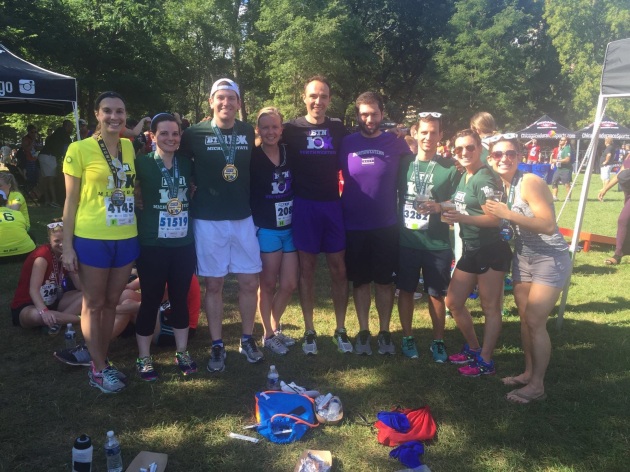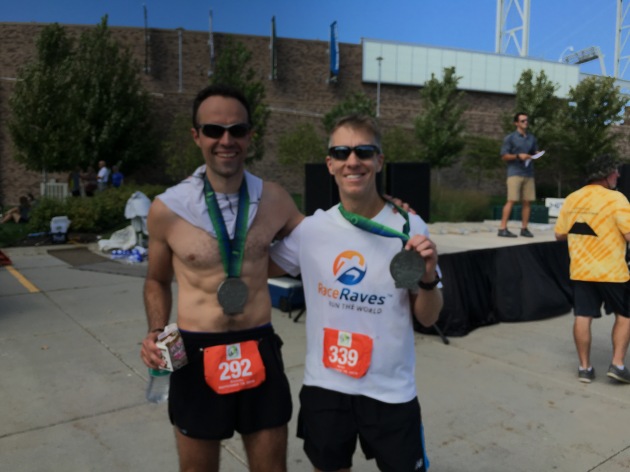End of Year Recap (2016)
January 3, 2017 6 Comments
After the quantum success of 2015, it was only natural to expect some sort of reversion. Statisticians call it “reverting to the mean.” It’s like how the tallest male in a family is unlikely to have children taller than him because he is an outlier, or how some sports teams are unlikely to follow up a surprise victory with a repeat performance. Last year saw exponential improvement, which meant a slew of brand new PRs. Almost as if to tamper my own expectations from the beginning, because deep down I knew I’d risk breaking myself to improve on 2015’s vast strides, I determined that 2016 would change the course of my running path from speed to endurance.
The year began with a monster goal: to finally vindicate my only DNF by finishing a 50-mile trail race. Three years earlier, I dropped out of my first ever attempt thanks to a last-minute injury. Although it’s melodramatic to say I’ve been “haunted” by that failure, it has lurked quietly in my mind, like a flickering light that’s too high to fix. Wanting to earn the title of ultrarunner once and for all, I felt determined to attack this challenge, throw everything I had at it in an unrelenting pursuit of glory.
The problem with that path is that it leads to an unsurprising pit of injuries. Despite my excitement and alacrity, by the first day of March, the walls echoed my curses every time I got out of bed to shower or stood up at my work desk. My right IT band was not happy with my reckless ramp-up to ultra distances and it took me two whole months to get back to normal. Unfortunately, that brought me just shy of ten days before the big day.
Whatever bad luck I suffered leading up to the Ice Age Trail 50-Miler, it fell prey to ten straight hours of pure running magic. I ran comfortably, through fields, over coiled roots, and up the dirt face of more than one bluff to finally conquer the distance. At no point in the race did I feel remotely fatigued or defeated, and I had the perfect 45-degree temperatures to thank for it. The day’s constant chill was unusual, as if trapped by a giant, glass dome.
This was the race of 2016. Even if the rest of the year I had fallen completely apart and stopped running altogether, I would remember it for this one accomplishment. Upon crossing the finish line, for better or worse, I felt invincible. Longer distances were no longer as intimidating as they were that morning. The selective amnesia that plagues most runners was strong, and for several weeks, I was considering events I had previously thought crazy.
The glow of May was so strong that the rest of the year felt like it was in its shadow. From the highest high I plummeted to new lows in Omaha, where I went from 8-minute miles to walking around mile 18. Dehydration, sunburn, and a subpar summer training plan had spelled doom for me in the Cornhusker State. After years of running marathons, I had an insouciant expectation that I would simply finish, no problem, maybe even under 3 hours and 30 minutes.
That did not happen. Instead, I ran my second slowest marathon ever, the world around me literally spinning at mile 24. Three weeks later, I put in a considerably better performance in Newport, Rhode Island, but I still felt like the distance was breaking me in the last 10k. I felt like I was losing the endurance from my marrow, hearing my in-laws’ admonishment with every tired step:
Wait ‘till you get older.
The confidence that I had carried with me all year had faded with these two performances. On paper, they made sense. Last year, I was focused and disciplined. Every workout was aimed directly at Berlin. Weekly workouts were tailored with specific goals, months had overarching purpose, and each season was part of a carefully calculated regimen. Like a transparent, steampunk machine, my program was chiseled and welded to (near) perfection.
After washing off the salt from my trail-worn legs, 2016 lost its compass. My only real goal was to add more states to the map. In previous years, I’ve used races in new states as milestones en route to a time goal. But without a time goal, I lacked the motivation to wake up early to run before work, or to push the pace during long runs. Running became perfunctory, something I did out of obligation; something I had to do, not something I wanted to do.
But then I ran a 50k on a whim. I hadn’t put in the necessary training, but I signed up anyway. As if to close the year how it began, the race took place in perfect running conditions and I ran up and down the path three times, strong and confident. I was back in a warm, happy place, letting my legs do the work, air rushing through my lungs, surrounded by equally driven people.
As I look forward to 2017, I have decided to pursue another unfulfilled challenge: to qualify for the Boston Marathon. I tried to achieve a fast time in Berlin in 2015, but I was unable to make it happen. I’ve signed up for a weekly training group whose sole purpose is to earn that envious time, which is a big step for someone who uses running as a means to disconnect from the world. My hope is that it will reinvigorate my drive to improve my running times, and at the very least, allow me to post a competitive time this spring.
It becomes more obvious as I think about it, but maybe adding a group component to my training is exactly what I need now. After hitting the paths solo for almost eight years, I’ve reached another dreaded plateau. My 1:29 half marathon PR is two and a half years old, and it will be two years this May that I ran my 3:16 PR in Fargo. I don’t expect to improve my times every year, but as I write this, I’m not remotely close to either mark. But though I enjoy the physical act of running, the community is what keeps me connected to the sport.
So perhaps it’s time I actually run with people without bibs.
My enthusiasm, of course, is not enough to inoculate me against injury or my own bullheaded drive for improvement. Every year that passes is a year of experience – wait ‘till you get older – and a year of surprises, good and bad. And with each surprise is a new lesson learned, a new toolkit for solving problems. I just need to stay focused and committed.
If you’re reading this, I want to thank you for humoring me every so often as I try and translate my passion into writing. If we’ve run together, read each other’s stories, or have yet to share the path ahead, I hope you chase exciting goals in 2017 in and out of running shoes. This sport, and so many others, affords us the opportunity to be together and to improve ourselves. With the world quickly drawing ugly lines between us, we need to embrace every friendly gathering and strive to help everyone reach their own finish lines.
Onwards to another year, one foot in front of the other.






























